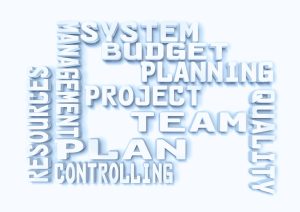
Digital transformation is now a crucial strategy for businesses striving to stay competitive in a rapidly evolving digital landscape. Yet, the reality is sobering: a staggering 70% of digital transformation initiatives fail to achieve their intended outcomes. This isn’t just a tale of lost investments; it’s a wake-up call about missed opportunities, eroded trust, and significant competitive disadvantages. So, what can you do to avoid becoming part of this alarming statistic?
Why Digital Transformations Fail: Uncovering the Hidden Challenges
Is it the technology? The people? The strategy? The answer isn’t always straightforward. Many businesses rush into digital transformation, drawn by the promise of innovation, without fully grasping the complexities involved. From misalignment between technology and business goals to inadequate change management, there are numerous pitfalls that can derail even the most promising initiatives. Understanding these challenges is more critical now than ever before.
The Urgency of Getting Digital Transformation Right
Failed transformations can wreak havoc far beyond financial loss. They can disrupt operations, tarnish reputations, and alienate customers. With businesses under relentless pressure to innovate, understanding why digital transformation failures occur and how to prevent them has never been more essential.
The Core Problem: Misalignment and Mismanagement
One of the primary culprits behind digital transformation failures is misalignment between technology and business strategy. Companies often plunge into digital initiatives without a clear roadmap or fail to involve the right stakeholders early on, leading to resistance, miscommunication, and ultimately, failure. Other common pitfalls include outdated processes, inadequate change management, and the absence of a clear vision.
The Hidden Costs of Failed Digital Transformations
Digital transformation failures aren’t just costly missteps, they are profound setbacks that can have enduring consequences for your business:
- Financial Losses: Failed transformations can drain millions from company budgets through lost investments in technology and resources.
- Eroded Trust: When digital initiatives fail, stakeholders lose confidence in leadership and future projects.
- Competitive Disadvantage: Falling behind in a tech-driven market puts companies at risk of losing their competitive edge, stifling innovation, and growth.
Key Reasons Why Digital Transformations Fail
- Lack of Clear Vision and Strategy: Without a well-defined strategy, digital initiatives often lose focus and direction.
- Resistance to Change: Change can be difficult, and without effective communication and training, employees may resist new processes and technologies.
- Insufficient Leadership Support: Digital transformation requires unwavering support from leadership; without it, initiatives often lack the drive to succeed.
- Inadequate Technology Integration: Poor integration of new technologies with existing systems can disrupt operations and create inefficiencies.
- Neglecting Company Culture: Digital transformation isn’t just about technology; it’s about fostering a culture that embraces change and innovation.
5 Essential Steps to Avoid Digital Transformation Pitfalls
- Develop a Comprehensive Strategy: Begin with a strategy that aligns your digital initiatives with your business goals. Clearly define the roadmap and ensure that every tech investment serves a strategic purpose.
- Involve the Right Stakeholders Early: Engage cross-functional teams from the outset to build support, reduce resistance, and ensure that all voices are heard. Early engagement fosters a sense of ownership and commitment.
- Invest in Change Management: Guide your workforce through the transition with comprehensive training, clear communication, and ongoing support. Effective change management is crucial to overcoming resistance.
- Measure Progress and Adapt: Regularly assess your progress using key performance indicators (KPIs). Be prepared to pivot and adjust your approach based on what’s working and what’s not.
- Embrace Flexibility: Stay agile and responsive to changes in technology, market demands, and feedback from your team. Flexibility allows you to adapt your strategy to emerging challenges and opportunities.
The Bottom Line: Success Demands Strategy, Commitment, and Adaptability
Digital transformation is not a one-off project, it’s an ongoing journey that demands a clear vision, strategic planning, and dedicated leadership. The stakes are high, and the cost of failure, whether financial, operational, or reputational, is too great to ignore. By investing the time, resources, and commitment to do it right, your organization can turn digital transformation into a powerful engine of growth and innovation.
Need Help with Your Digital Transformation?
Navigating the complexities of digital transformation can be challenging, but you don’t have to do it alone. If you need expert guidance on how to align your strategy, engage stakeholders, or manage change effectively, feel free to reach out. Let’s work together to make your digital transformation a success.









